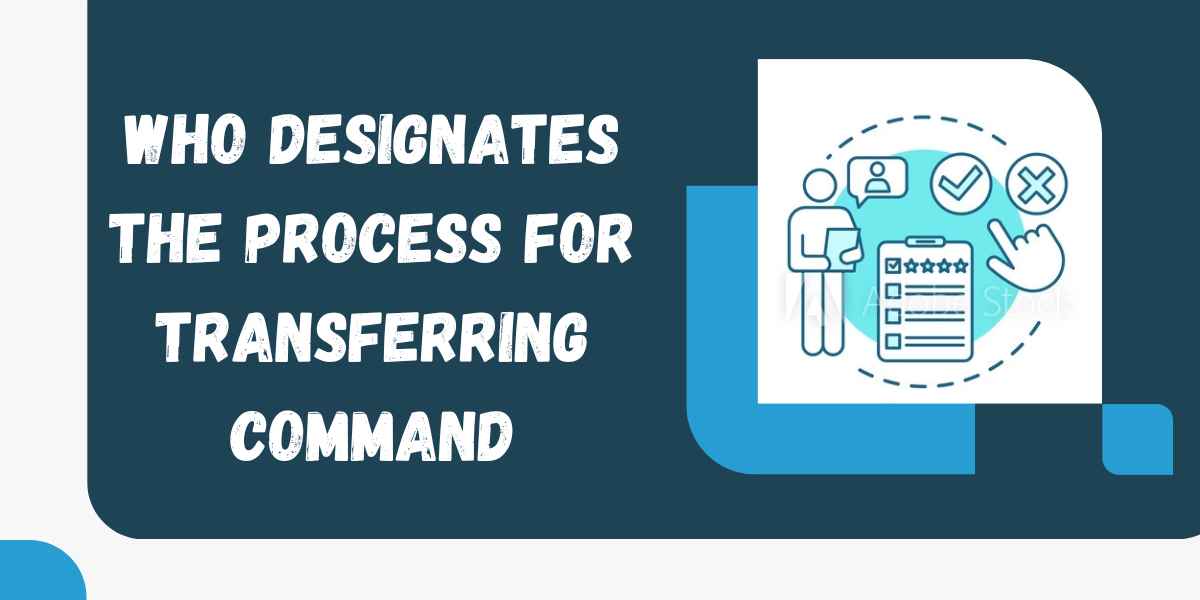Who Designates The Process For Transferring Command

Technology has fundamentally changed the way we conduct business, and the way we transfer command. In this blog post, we will explore how technology has changed the process for transferring command and how you can take advantage of these changes to improve your workplace.
The chain of command
The chain of command is a process by which a commander or supervisor designates an individual or group to take charge of an operation. The process begins with the commander or supervisor issuing an order, which is then transmitted to the subordinates. This subordinate then decides who will carry out the order and how they will do so.
The chain of responsibility
Command is a term used in many different contexts to describe the person who has authority to make decisions and carry out orders. In the military, command refers to the chain of responsibility that determines who designates the process for transferring command.
Command theory is the study of how people behave under conditions of leadership. The theory focuses on how individuals and groups interact to create a collective effect. Command theory is used in business, logistics, and management studies to understand how organizations work.
The chain of responsibility is a military doctrine that defines who takes charge when one commander is relieved or killed. The doctrine states that command passes from superior to subordinate according to a specific order of succession. The order of succession depends on who is currently in charge at the time a commander’s position becomes vacant or dangerous.
The chain of responsibility starts with the commanding officer (CO). If the CO is absent or incompetent, then his deputy assumes command. If the deputy is also absent or incompetent, then their senior officer (SO) assumes command. If no senior officer exists, then someone from within the unit assuming command until they can be relieved by higher headquarters
The chain of authority
The chain of authority is a process by which units are transferred from one commander to another. This chain of command is often abbreviated as C2. The C2 process begins with the president or other senior officer in charge who delegates authority to the commanding officer. The commanding officer then passes down their orders and decision-making processes through their chain of command. Ultimately, unit members must obey the orders of their superiors unless those orders are illegal or unconstitutional.
The concept of chain-of-command
The chain-of-command refers to the process for transferring command from one individual or organization to another. This process is outlined in a formal document, the chain of command protocol, which is typically created and implemented by a leadership team. The chain-of-command protocol outlines the steps that need to be followed in order for an individual or organization to assume command of another unit.
The chain-of-command protocol starts with the leader of the unit being designated as the commanding officer (CO). The CO then assigns officers and noncommissioned officers (NCOs) to their respective positions within the unit. These assignments are based on their skill set and experience, as well as the needs of the unit. Once these assignments are made, they must be communicated throughout the unit.
Next, any changes or updates to the chain of command must be approved by the CO. This includes anything that might affect who is in charge of the unit, such as promotions or transfers. Changes to the chain of command must also be approved by higher headquarters if they involve a change in responsibility or authority.
Finally, when it is necessary for someone else to take over control of the unit from its current leader, they will proceed through a succession plan set up by their CO. This plan outlines who will take over for each position in the chain of command once that person no longer has control over them.

Types of chains of command
Command chains in organizations can take many different forms, but they all have one common goal: to ensure that decisions are made and actions are taken in a timely and effective manner.
There are three primary types of command chains in organizations: functional, organizational, and hierarchical. Functional command chains are composed of departments or divisions that work independently to accomplish specific goals.
Organizational command chains are composed of managers who work together to achieve strategic objectives. Finally, hierarchical command chains involve a single leader at the top who makes decisions and delegates tasks down the chain of command.
Each type of command chain has its advantages and disadvantages. Functional commands are typically efficient because each department or division is autonomous and able to operate without interference from other parts of the organization.
However, they can be difficult to manage because individual units don’t share common goals or objectives. Organizational commands tend to be more efficient than functional commands because they allow managers to work together as a team to accomplish shared goals.
However, they can be less autonomous, which can lead to conflict between units over decision-making authority. Hierarchical commands offer the best of both worlds; they’re efficient because units work together as a team to achieve common objectives, but leaders retain control over decision-making so ultimate authority remains in place.
Types of chains of responsibility
There are three types of chains of responsibility in a military command structure: line, staff, and functional.
Line chains of responsibility are derived from the commander’s position at the top of the command pyramid. All subordinates report directly to the commander, who is responsible for all decisions and actions taken by his unit. This type of chain is most common in peacetime organizations because it allows commanders to maintain tight control over their troops.
staff chains of responsibility are derived from positions at the middle or lower levels of the command pyramid. Superiors delegate decision-making authority down to subordinates, who then relay orders up the chain. Staff chains tend to be more prevalent in wartime organizations because they allow commanders to delegate more authority without losing direct control over their units.
functional chains of responsibility are derived from positions outside the command pyramid. These positions include experts in different fields such as finance, logistics, engineering, and intelligence who provide support to troops under combat conditions. Functional chains allow commanders to tap into specialized expertise when needed, which can improve decision-making ability and speed up execution times.
Effects on the chain-of-command
If a unit is being transferred from one commander to another, the transfer of command (ToC) process must be initiated by the senior commander. The ToC process has four steps:
The senior commander must determine that a change in command is required and decide who will carry out the ToC. He then notifies his subordinate commanders and orders them to assume their new missions. The ToC coordinator conducts an inspection of the headquarters and selects staff members to accompany the new commander on tour of duty. Finally, the ceremony to transfer command takes place.
Effects on the chain-of-responsibility
When a company undergoes a change in leadership, the chain-of-responsibility can be altered. Different individuals may have different responsibilities when it comes to transferring command. In some cases, a designated leader may take control of the situation and make all the decisions with no outside interference. In other cases, a more formal process may be put into place in order to ensure that everyone is aware of their respective roles and responsibilities.
If You Need To Get More Information Then Click The Below Link.
Gramhir offers a comprehensive and user-friendly platform for managing your Instagram presence. With its advanced features for analytics, scheduling, and growth tracking, it empowers businesses and influencers to maximize their performance on the platform. By utilizing Gramhir, you can ensure that your Instagram strategy is well-informed, organized, and optimized for success.



